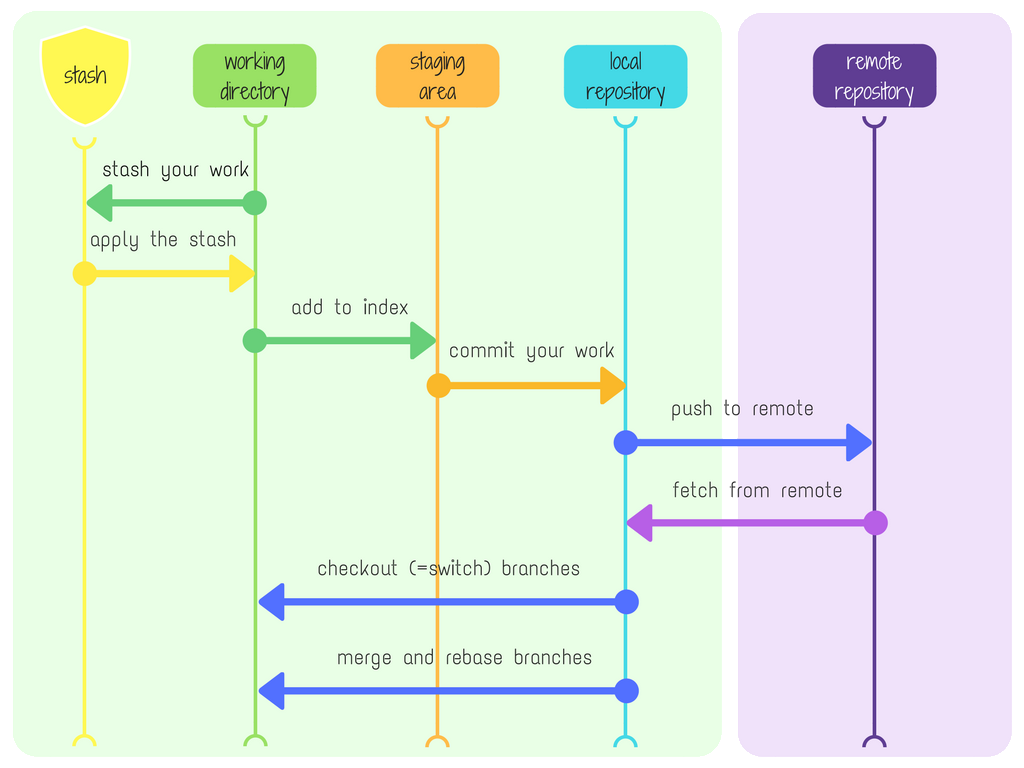

d - No, don’t add this hunk and all other remaining hunks.Pressing ? will give you a short explanation for each one, but the ones I use most often are:
Git stage all changes code#
+ $stderr.puts "Couldn't attach function #"Īt the top is some diff info about the current position in the file, followed by the actual diff of the source code (called “hunk”), and below that are your available options. When you pass this option to add, instead of immediately adding all the changes in the file to the index, it goes through each change and asks you what you want to do, and looks like this: -24,7 +32,12 module CoreMIDI I use this option so often that I’ve added a git alias for easy access: git config alias.ap "add -patch". Normally, calling git add will add all the changes in that file to the index, but add supports an interesting option: -patch, or -p for short. With Git, on the other hand, you first add all the changes you want to be in the next commit to the index via git add (or remove a file with git rm). Note: Depending on your version of git, your output might differ slightly. In other systems whenever you make a commit, all the changes you made in your working copy are committed. The index is the place where you prepare your next commit. To continue your journey, visit the Stage lines of code page.One of the things that is pretty much unique to Git is the index (also known as the cache or staging area). When you click a changed file in the commit, Visual Studio opens the side-by-side Diff view of the commit and its parent. From here you can revert the commit, reset the commit, amend the commit message, or create a tag on the commit. When you double-click a Commit, Visual Studio opens its details in a separate tool window. When you double-click any file in the Changes and the Staged changes sections, you can see a line-by-line comparison with the unmodified version of the file. Visual Studio also makes it easy to commit and sync with one click by using the Commit All and Push and Commit All and Sync shortcuts. The equivalent command for this action is git commit -a. Just enter your commit message and then select Commit All. In this case, Visual Studio allows you to commit your changes directly without having to stage them. You can also choose not to stage your modified files by skipping the staging area. The equivalent command for this action is git reset to unstage a single file or git reset to unstage all the files in a directory. The equivalent command for this action is git commit -m "Your commit message".Ĭhanges can also be unstaged by clicking the – (minus) button. Only changes in the Staged Changes section are added to the next commit, which you can do by selecting Commit Staged. When you stage a change, Visual Studio creates a Staged Changes section. You can also stage all your modified files with one click by using the stage all + (plus) button at the top of the Changes section. To stage changes when you're ready, select the + (plus) button on each file you want to stage, or right-click a file and then select Stage. For more information, see the Reference issues and pull requests blog post. New in version 17.6: You can also reference an issue or a pull request by typing # or selecting the # button in the lower right side of the commit message text box.

These changes are equivalent to what you would see when you enter the git status command in the command line: Git tracks file changes in your repo as you work, and separates the files in your repo into three categories. Or, you can work locally with no provider at all. While this article references GitHub repositories, you can work remotely with the Git provider of your choice, such as GitHub or Azure DevOps. The core part of any Git workflow is modifying files and committing the changes in those files.
Git stage all changes for mac#
Applies to: Visual Studio Visual Studio for Mac Visual Studio Code


 0 kommentar(er)
0 kommentar(er)
